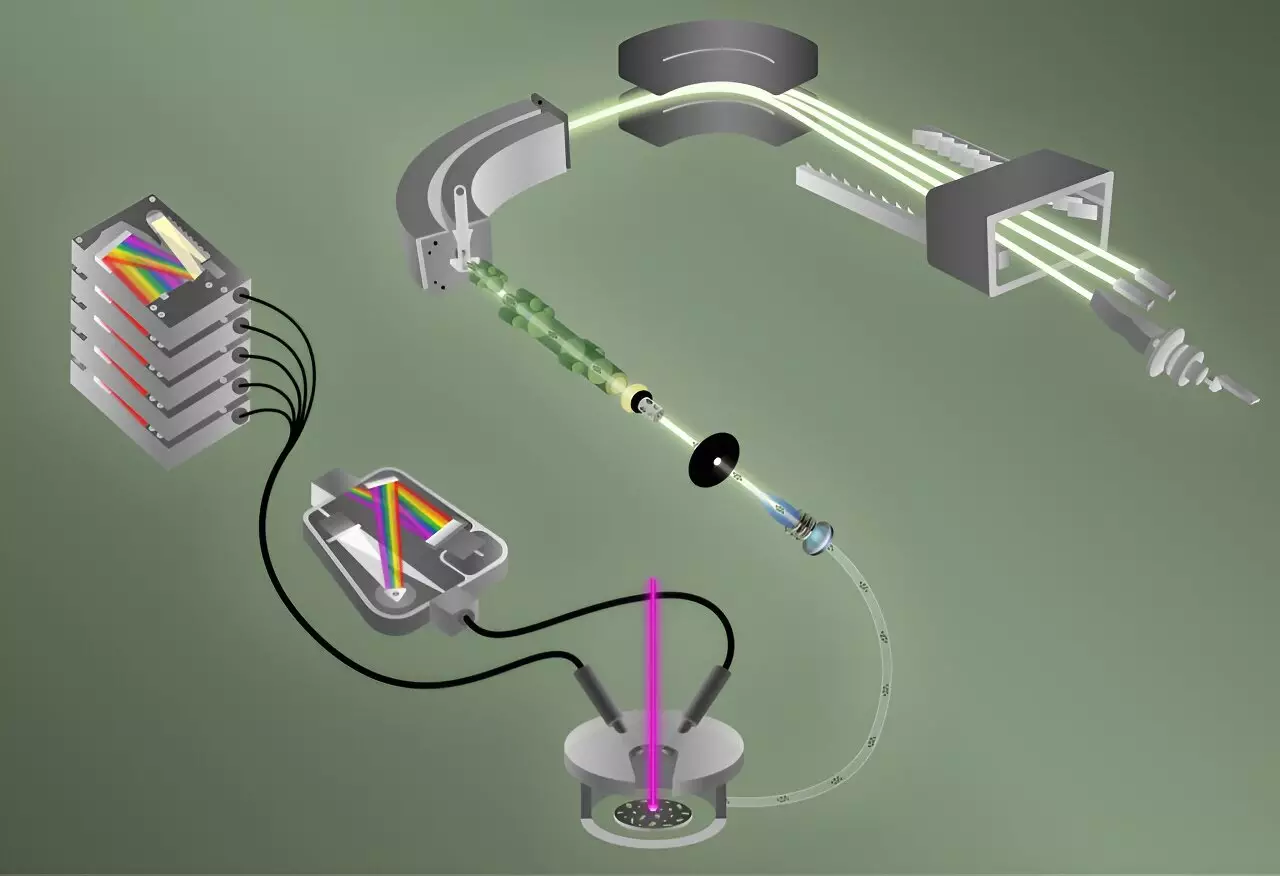In a significant leap for analytical chemistry, scientists at Oak Ridge National Laboratory (ORNL) have pioneered an advanced method for simultaneously detecting fluorine and various isotopes of uranium from single particles. This remarkable achievement is not just a technical triumph; it holds the potential to enhance nuclear material inspections, benefitting authorities like the International Atomic Energy Agency (IAEA) in their nonproliferation efforts. The breakthrough, recently published in the Journal of the American Chemical Society, could redefine how researchers understand both chemical compositions and isotopic variations at a granular level.
The essence of this research resides in the ability to analyze minute particles that are crucial for nuclear chemistry. Fluorine plays an integral role in transforming uranium into a state conducive for enrichment, a fundamental process in nuclear fueling. By detecting both fluorine and uranium isotopes within the same particle, the ORNL team has created a tool that could reveal insights into the origins and historical usage of nuclear materials. Benjamin Manard, the project lead, emphasizes that this rapid particle analysis makes it possible to gather information that previously required extensive time and resources.
Isotopes, which are variants of chemical elements distinguished by their neutron count, carry crucial information about the processes that created them. The ability to separate and identify these isotopes effectively augments researchers’ understanding of not only uranium but also the broader context of nuclear process dynamics. The development heralds a significant advancement in discerning information about nuclear materials’ ages and pathways.
At the core of this development are two sophisticated analytical techniques: laser-induced breakdown spectroscopy (LIBS) and inductively coupled plasma mass spectrometry (ICP-MS). LIBS, known for its high sensitivity, rapidly vaporizes samples like uranyl fluoride, generating a plasma that emits light. This light, analyzed through spectroscopy, provides elemental data, including the presence and quantity of fluorine.
The complementary technique, ICP-MS, utilizes helium to transport the generated ions into a mass spectrometer, where different uranium isotopes are characterized. This process occurs under extreme conditions, with the plasma reaching temperatures hotter than the sun’s surface. Together, these methods form an integrated examination approach allowing simultaneous detection of both fluorine and uranium isotopes.
Manard noted the innovation behind combining LIBS and ICP-MS, as previously these methods were operated in isolation. The juxtaposition of these techniques enables a comprehensive analysis that promises a new level of speed and accuracy in particle characterization.
While the implications for nuclear material inspection are significant, the research team recognizes that the potential applications extend far beyond nonproliferation. The advancements made could alter fields ranging from next-generation battery production to environmental sciences. For instance, in one intriguing application, researchers investigated the fluorine content in shark teeth to study environmental conditions across eras. This creative use of technology showcases its versatility and capacity for impacting various scientific domains.
As Manard and his team push the boundaries of their methods, they intend to explore more types of uranium compounds and other challenging elements, such as chlorine, known for its similar properties to fluorine. The eagerness to expand beyond initial findings indicates a robust vision for future experiments and innovations.
The strides made in particle analysis are poised to motivate further investigations into the nuclear fuel cycle and its associated materials. The combination of speed and accuracy in identifying chemical and isotopic compositions will inevitably open doors to enhanced research methodologies in nuclear forensics. The importance of high-throughput analysis cannot be overstated, especially as researchers aim to scale their capabilities to process thousands of particles in just one day.
This study not only highlights the collaborative prowess at ORNL but also points to the necessity for multidisciplinary approaches in scientific research. The involvement of various experts showcases an increasing trend where collective expertise drives complex issues to resolution, significantly affecting national security and environmental sciences.
The ability to detect uranium isotopes alongside fluorine in a single particle represents much more than a technical accomplishment; it signifies a profound shift in how the scientific community can approach nuclear material analysis. This innovative integration presents substantial opportunities for advancements in safety protocols and regulations surrounding nuclear materials, fostering peace and security globally. As the research continues to evolve, further exploration and development in this area promise to make meaningful contributions across multiple scientific disciplines, delivering invaluable insights into the atomic world.

